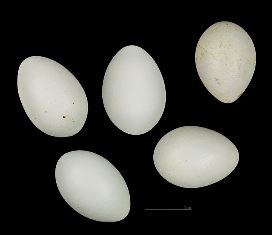Weaver species
Choose different species from drop-down list and press 'Go' button. See Full species list.Madagascar Fody Foudia madagascariensis
IUCN: Least concern Discovery: 007Categories: island, Foudia, fruit, Linnaeus, nectar, pest, palm, blue eggs,
News items about species
Discovery
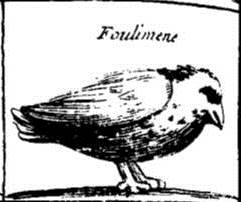
figure by Flacourt 1658 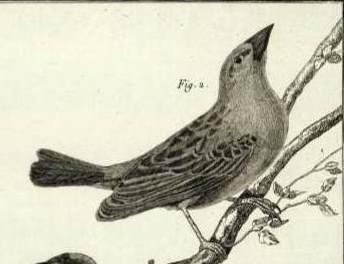
figure from Brisson 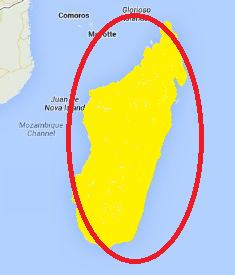
type locality circled IntroductionLinnaeus (1766) briefly descriped the Madagascar Fody, based on the longer description in Brisson 1760. Mathurin Jacques Brisson, a French zoologist, gave the names "Le Cardinal de Madagascar" (French) and Cardinalis madagascariensis (Latin). Brisson's painting is very poor, but his text is extensive, so there is no doubt about the species he was referring to.Brisson noted that the Madagascar Fody originated from Madagascar, from where they were sent to RAF de Reaumur by Pierre Poivre, the administrator of Mauritius and Reunion. Poivre travelled to Madagascar in 1756 (Stresemann 1952) where he collected many bird specimens for de Reaumur. The Madagascar Fody was first illustrated by Etienne de Flacourt, French governor of Madagascar. He wrote a book of the natural history, culture and history of southern Madagascar in 1658, including line drawings of some of the fauna and flora. He called the fody "Foulimene", and this is probably the first illustration (although a poor one) of any weaver species to appear in print. Flacourt wrote about the fody as being captured by the locals because it was a pest on the rice crops, and he thought them to be beautiful due to their scarlet plumage. Scientific citationLoxia madagascariensis Linnaeus 1766 Syst. Nat., ed. 12, 1, p.300 MadagascarMeaning of namesmadagascariensis After the island of Madagascar.First English nameMadagascar Grosbeak (Latham 1783).Alternate namesMadagascan Fody, Madagascan Red Fody, Red FodyCollectorPierre Poivre.Date collectedIn 1756 when Poivre visited Madagascar.Locality collectedMadagascar.Type specimensPoivre's type specimens did not survive (Stresemann 1952), but the painting of Brisson serves as a type. |
The above is based on Weaver Wednesday 2, a weekly series about the discovery of each weaver species.
This species text first appeared as
Weaver Wednesday [124] - Discovery [7]: Madagascar Fody on 2014-10-29
1. Basic biology
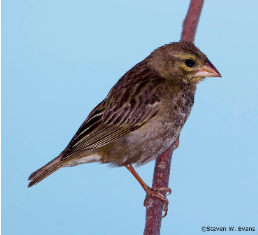
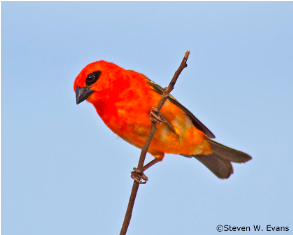
Identification. The Madagascar (or Red) Fody Foudia madagascariensis is abundant in Madagascar, and has been introduced to many other islands. The breeding male is crimson-red, with a short black line through the eye. There is notable variation in the red plumage, with some individuals more orange-coloured, or yellowish, and the brightness of the breast plumage is positively correlated with the male's body condition. The female and non-breeding male are olive-brown, with faint streaking. The juvenile resembles the female, but may be quite buffy. A fody with entirely red underparts must be a Madagascar Fody, but moulting fodies may be difficult to identify. Distribution.
Habitat. The Madagascar Fody inhabits open country, including natural savanna, cultivated areas and towns, and clearings in forest. It is not found in intact forest in Madagascar (except in transit), but forages in forest on Rodrigues Island. Roost-sites include sugar cane, bamboos, tall grasses, reedbeds, and mangroves and other trees. They show well-synchronized entry into and departure from large roosts (read more here).
The clutch is 2-4 eggs, and the eggs are pale blue-green, slightly glossy. The female incubates, but chicks are fed by both sexes, primarily by regurgitation. Old nests may be taken over by the Madagascar Bibfinch Lepidopygia nana. |
The above is based on Weaver Wednesday, a weekly series about weaver species.
This species text first appeared as
Weaver Wednesday [70]: Madagascar Fody (Red Fody) on 2013-10-15
2. Breeding facts
| Pair bond Monogamous Breeding season Sept-May in Madagascar; introduced populations Nov-Apr on Mauritius, Oct-May (peak activity Feb-Apr) on Reunion, Oct-May in Comoros, Sept-Apr (peak in Dec) in Seychelles, Nov-Dec in Chagos Is and Oct-Feb on St Helena; probably double-brooded Nest site attached to reeds, tall grass, near tips of branches of shrub or tree, or on mid-ribs of palm fronds, on St Helena usually in conifer,and within 1 m of ground or as high as 9 m (typically above 6 m in Seychelles, whereas often low dowm in Madagascar) Nest building field observations suggest female participation in nest construction, in captivity males built nests and female lined them Colony size No information Clutch size 2-4 eggs (mean 2 in Chagos Archipelago) Egg colour pale blue-green, slightly glossy Egg size average size 18 x 12.8 mm (Madagascar) Incubation female alone incubates, period 11-14 days Chicks and nestling period chicks fed by both sexes, primarily by regurgitation, nestling period 15-16 days |
Breeding information based on Handbook of the Birds of the World, Vol. 15.
3. Photos of Weaver Nests
 Vm 29929 |  Vm 16857 |  Vm 16856 |  Vm 16855 |  Vm 16854 |  Vm 16851 |
Thumb-nails of most recent PHOWN records - click on one to see its full record
See all PHOWN records for this species here.
PHOWN (Photos of Weaver Nests) provides valuable info on breeding distribution and colony sizes of weavers.
You can contribute by registering and submitting photos at Virtual Museum webpage.
4. Breeding distribution
Google map showing distribution (For species with small ranges you need to zoom in at the correct area to see the range):
yellow blob - range of weaver species; read more about this here.
![]() - PHOWN records with photos
- PHOWN records with photos
![]() - PHOWN records with no photos (Nest Record Cards, other records)
- PHOWN records with no photos (Nest Record Cards, other records)
![]() - Birdpix records
- Birdpix records
![]() - comments on out of range records, or interesting records
- comments on out of range records, or interesting records
![]() - type locality
- type locality
CLICK on the marker on the map to see individual record details.
5. Range changes
Not South African speciesThe above is based on Weaver Wednesday 3, a weekly series about range changes in South African weaver species.
This species text first appeared as
n/a








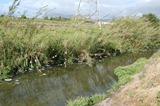


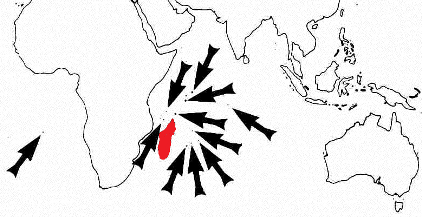 The Madagascar Fody occurs naturally in Madagascar (see red on map left). It has been introduced on Reunion, Mauritius, Seychelles, Rodrigues, Amirantes and Chagos Is, in the Indian Ocean, and also on St Helena in the Atlantic Ocean (see black arrows on map, based on Long JL, 1981, Introduced birds of the world). It has recently been found breeding in Oman and Bahrain. It is also present on Glorieuses and Comoro Islands, which it may have colonized without human assistance. No subspecies are recognised. Successful colonization of islands is thought to be a consequence mainly of its ability to breed successfully in the presence of black rats Rattus rattus.
The Madagascar Fody occurs naturally in Madagascar (see red on map left). It has been introduced on Reunion, Mauritius, Seychelles, Rodrigues, Amirantes and Chagos Is, in the Indian Ocean, and also on St Helena in the Atlantic Ocean (see black arrows on map, based on Long JL, 1981, Introduced birds of the world). It has recently been found breeding in Oman and Bahrain. It is also present on Glorieuses and Comoro Islands, which it may have colonized without human assistance. No subspecies are recognised. Successful colonization of islands is thought to be a consequence mainly of its ability to breed successfully in the presence of black rats Rattus rattus.

